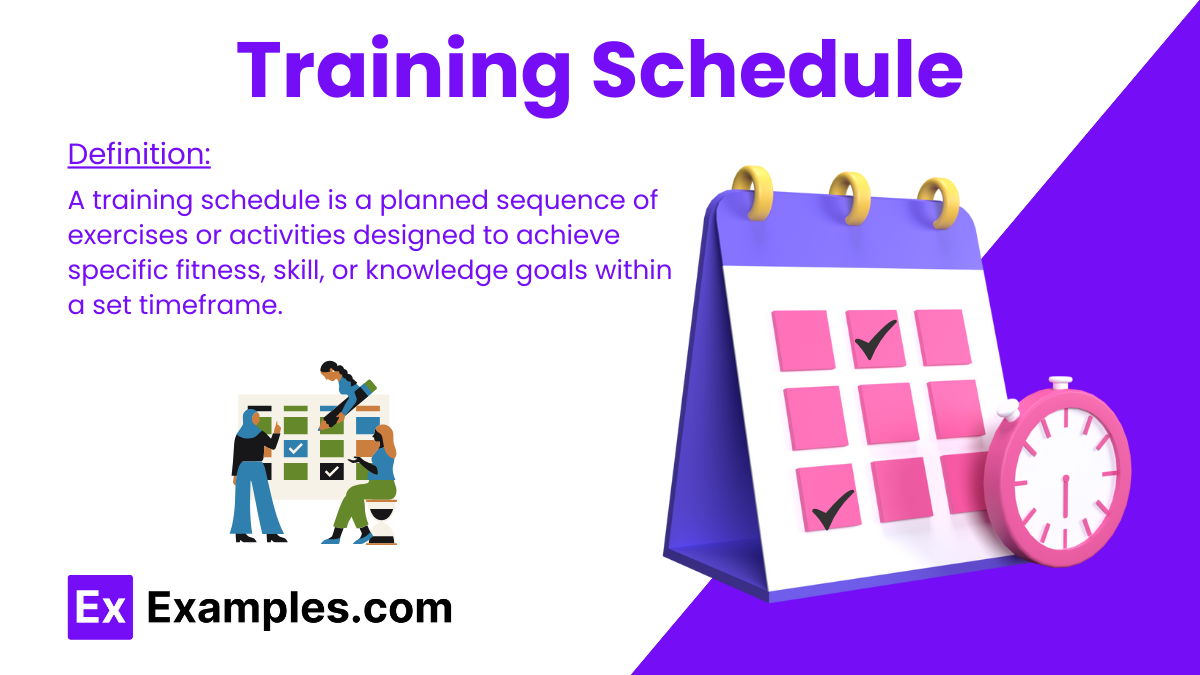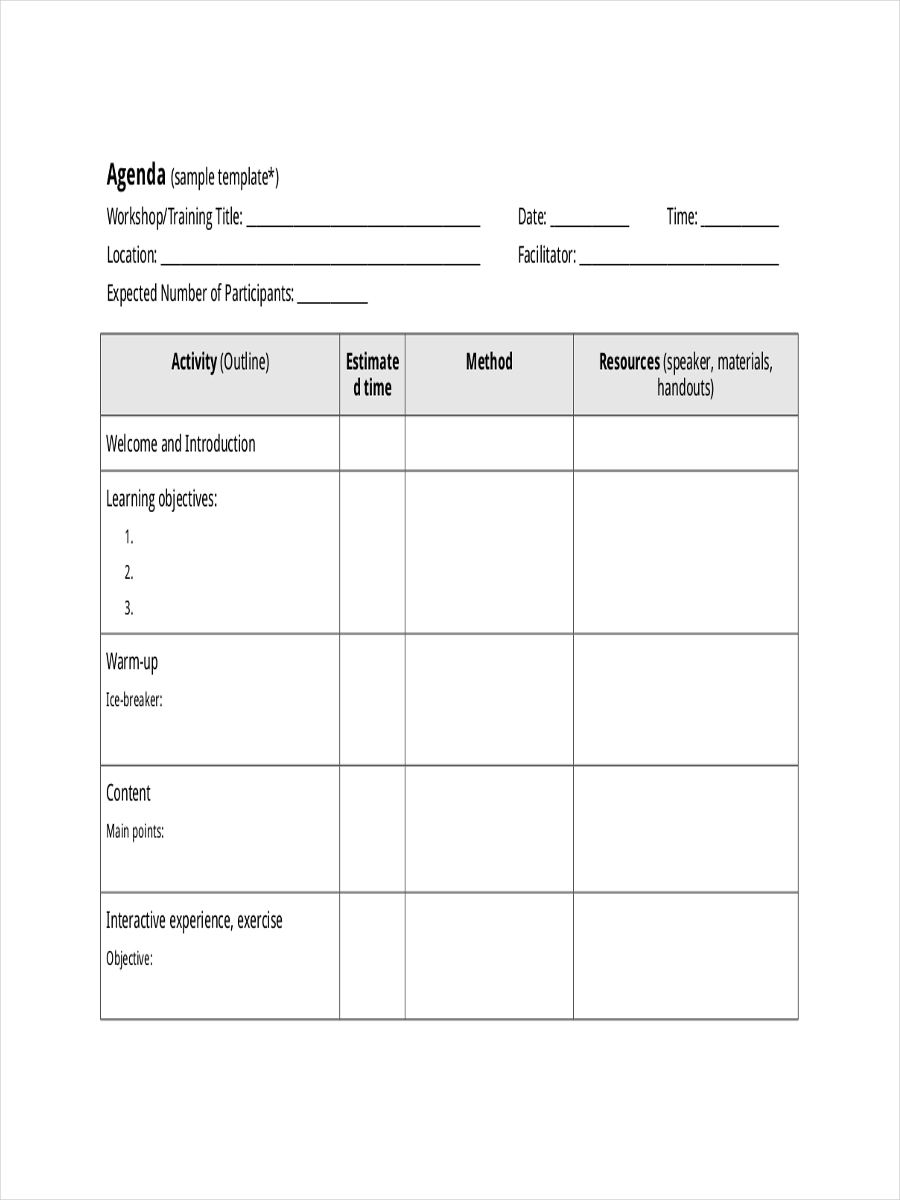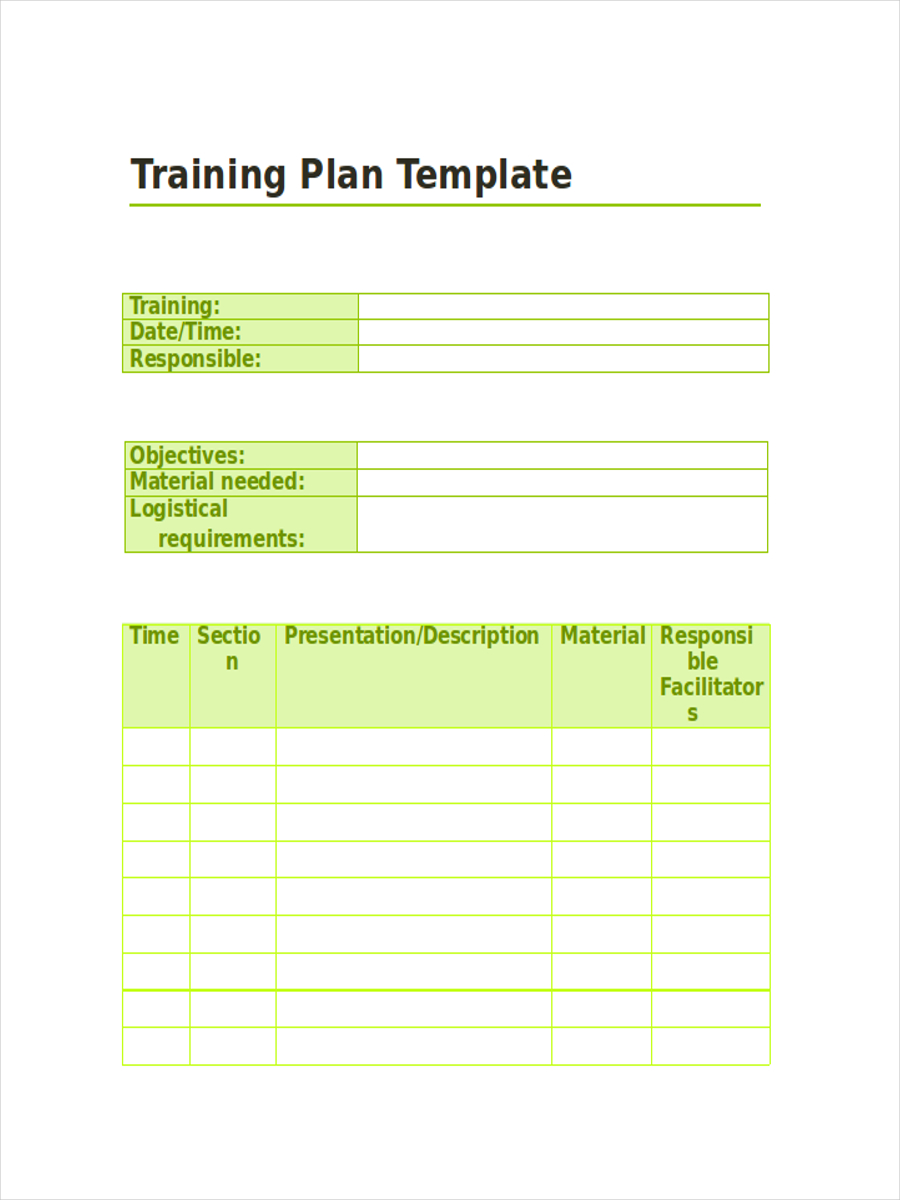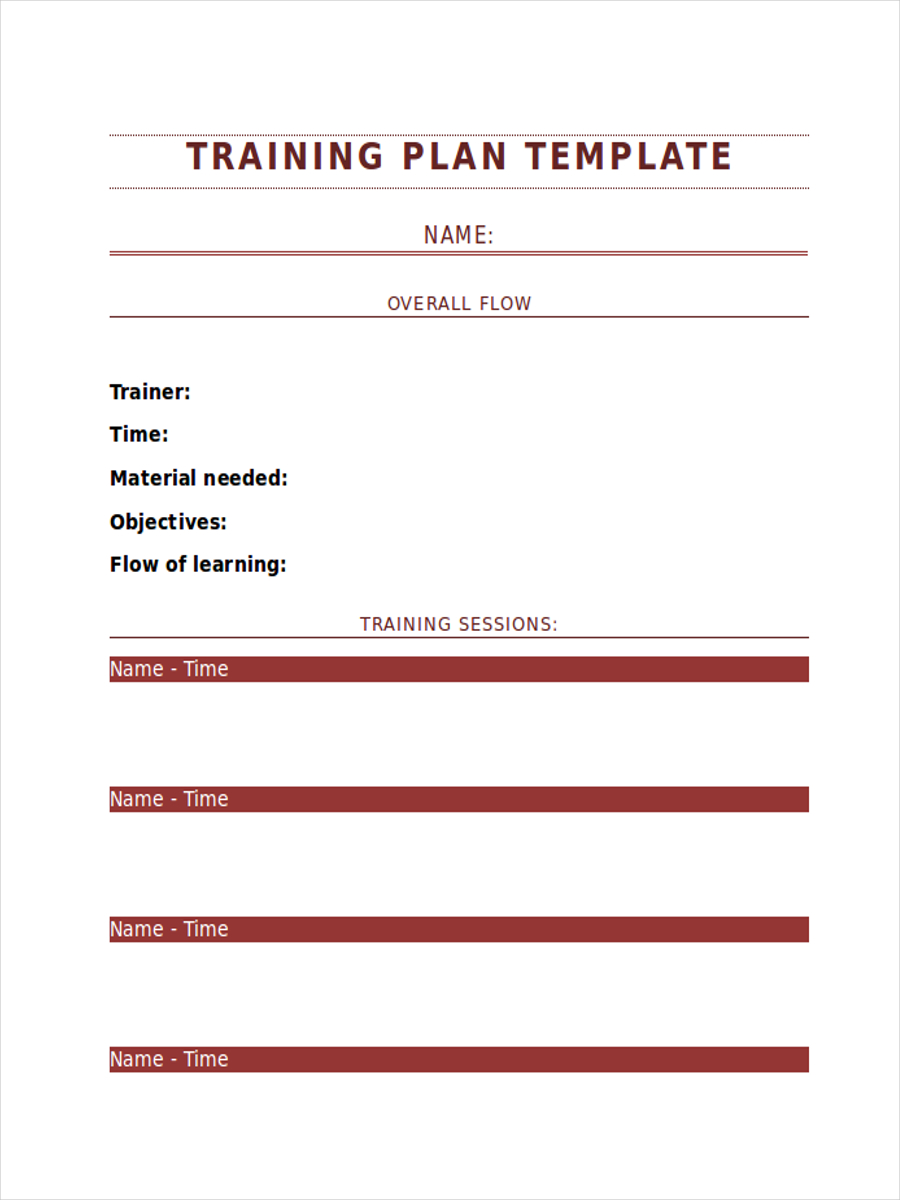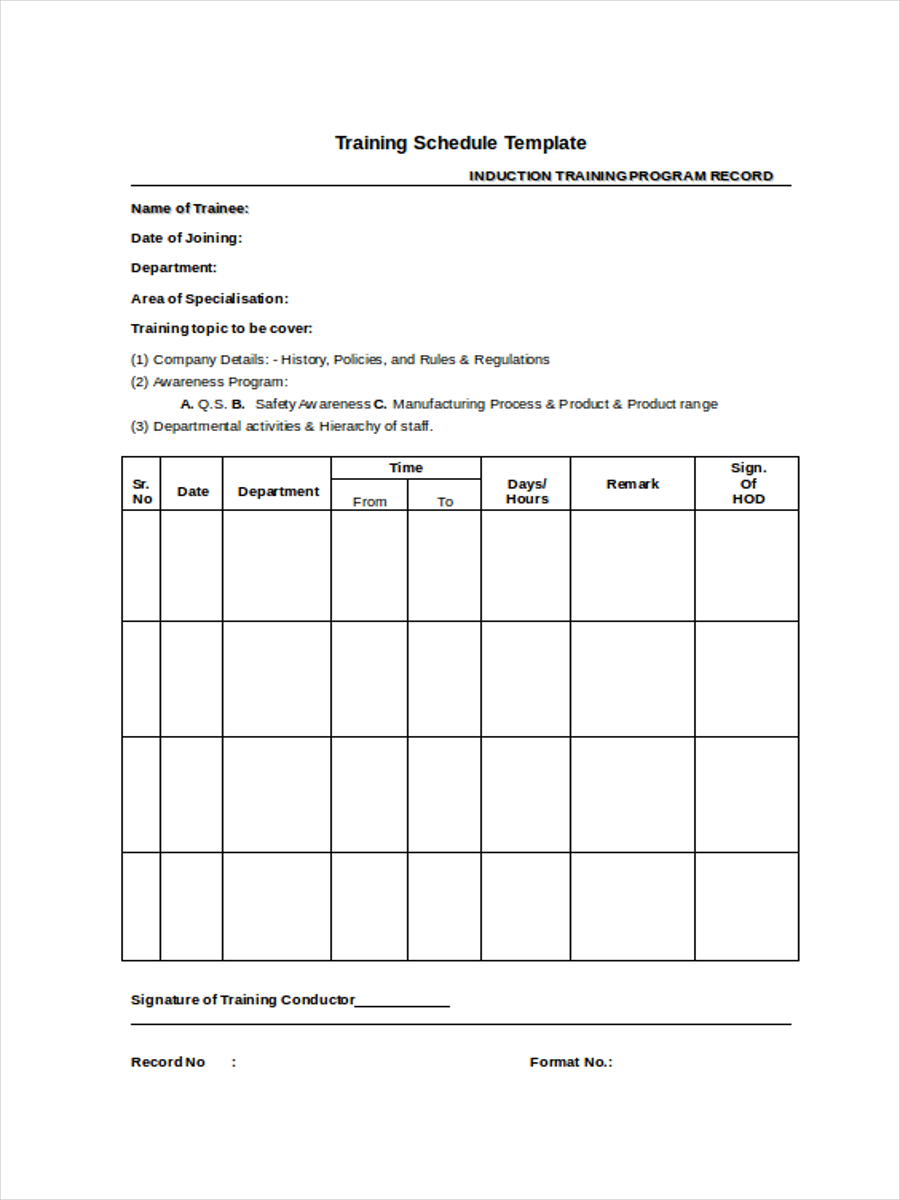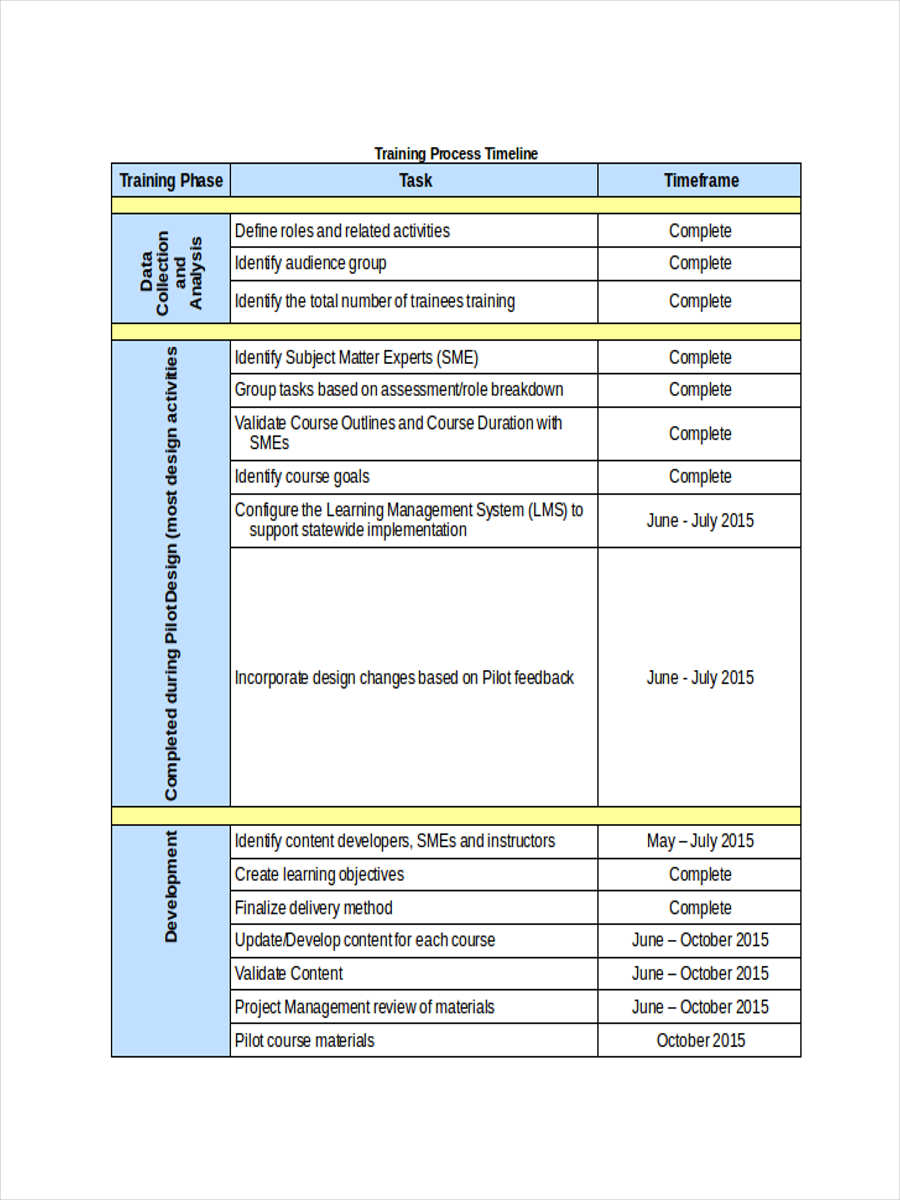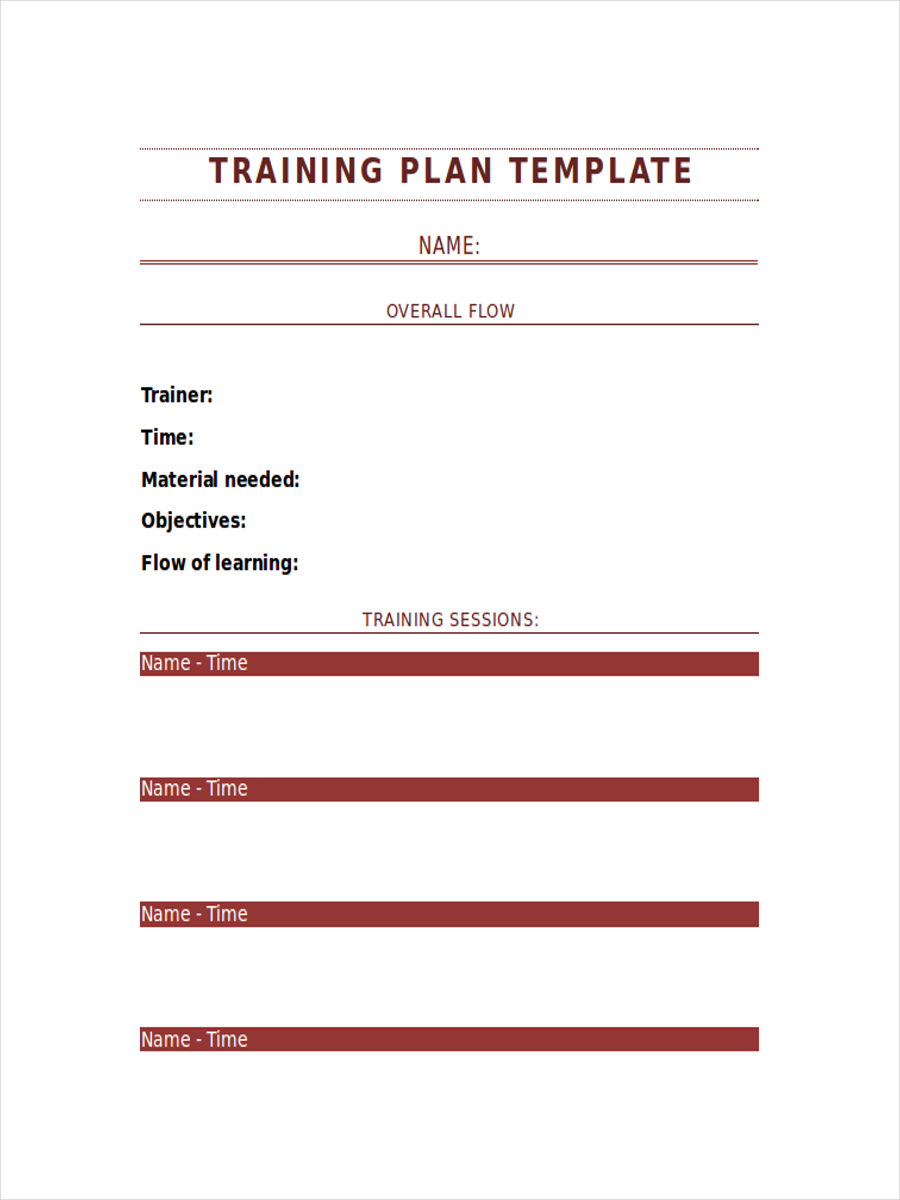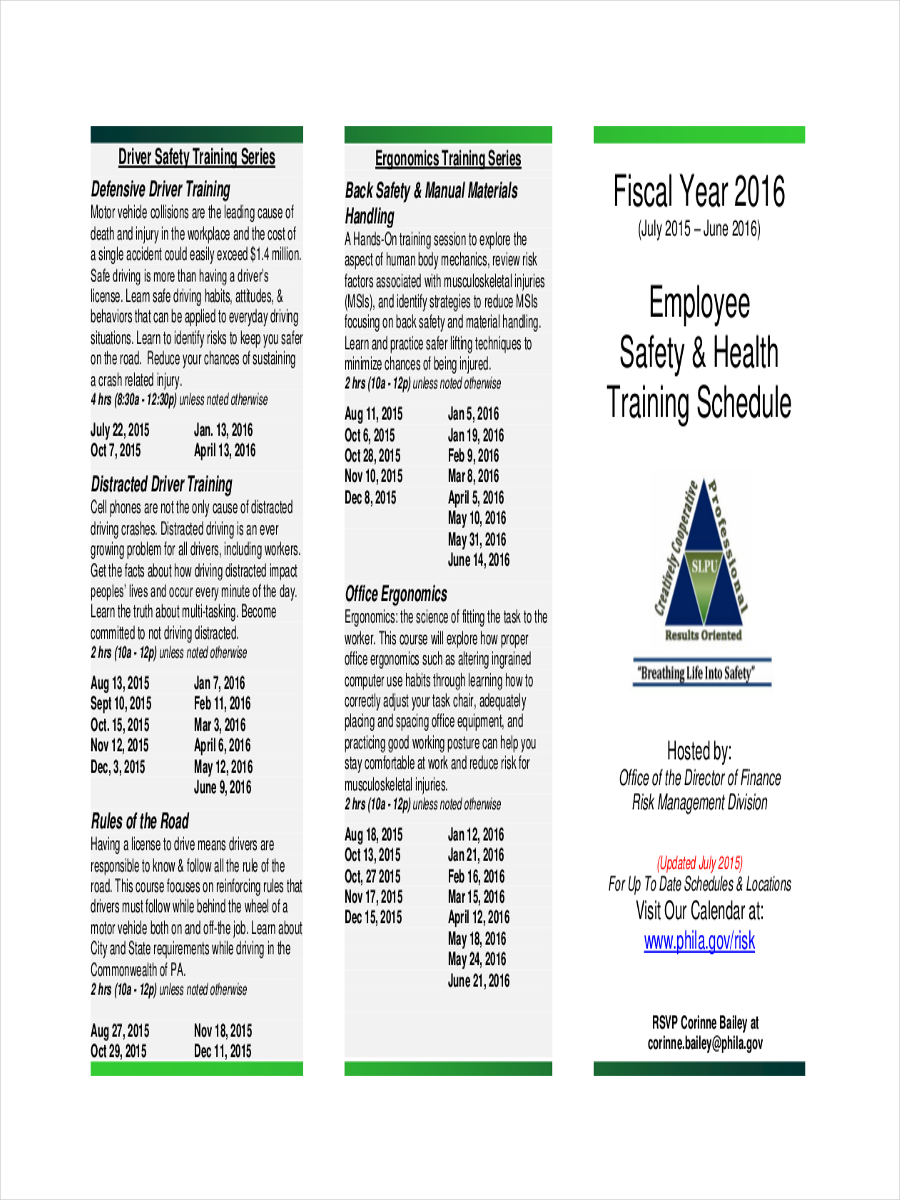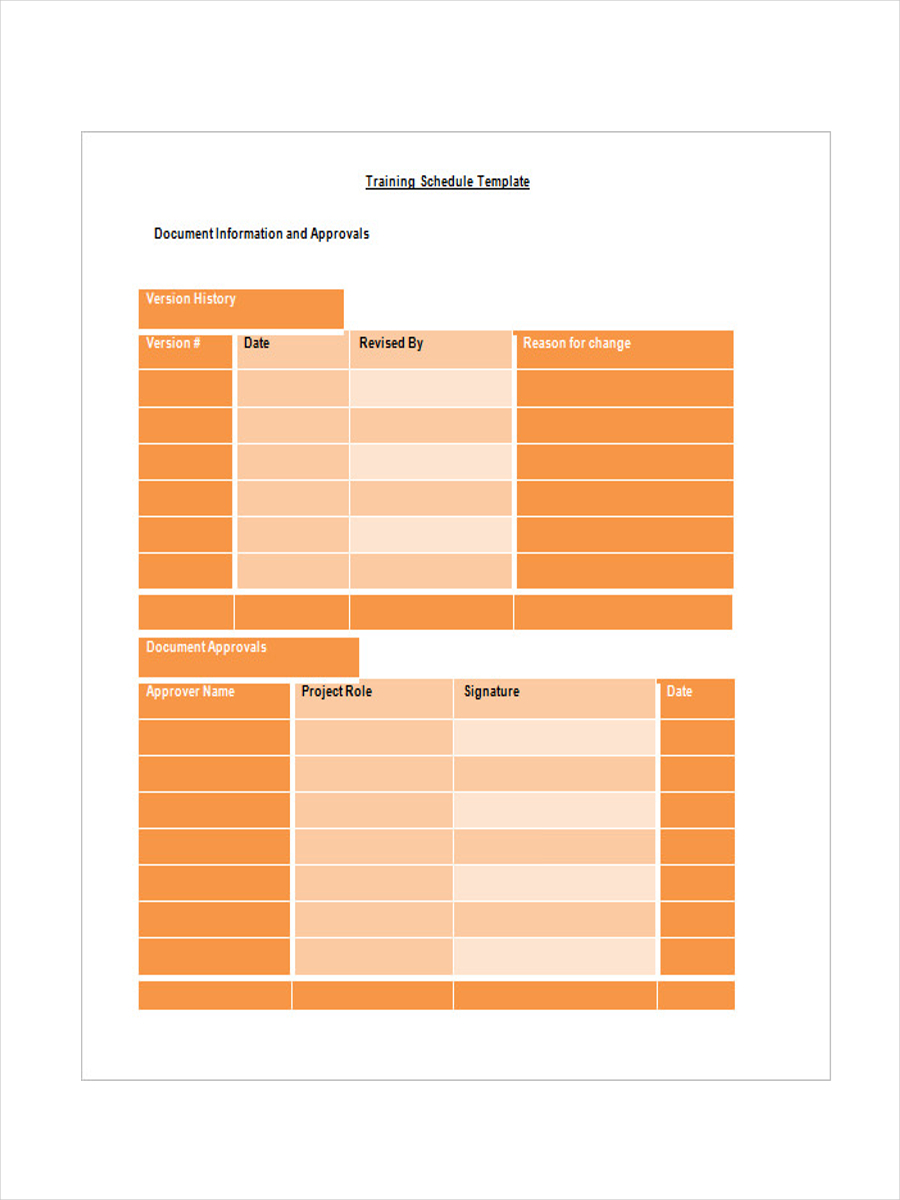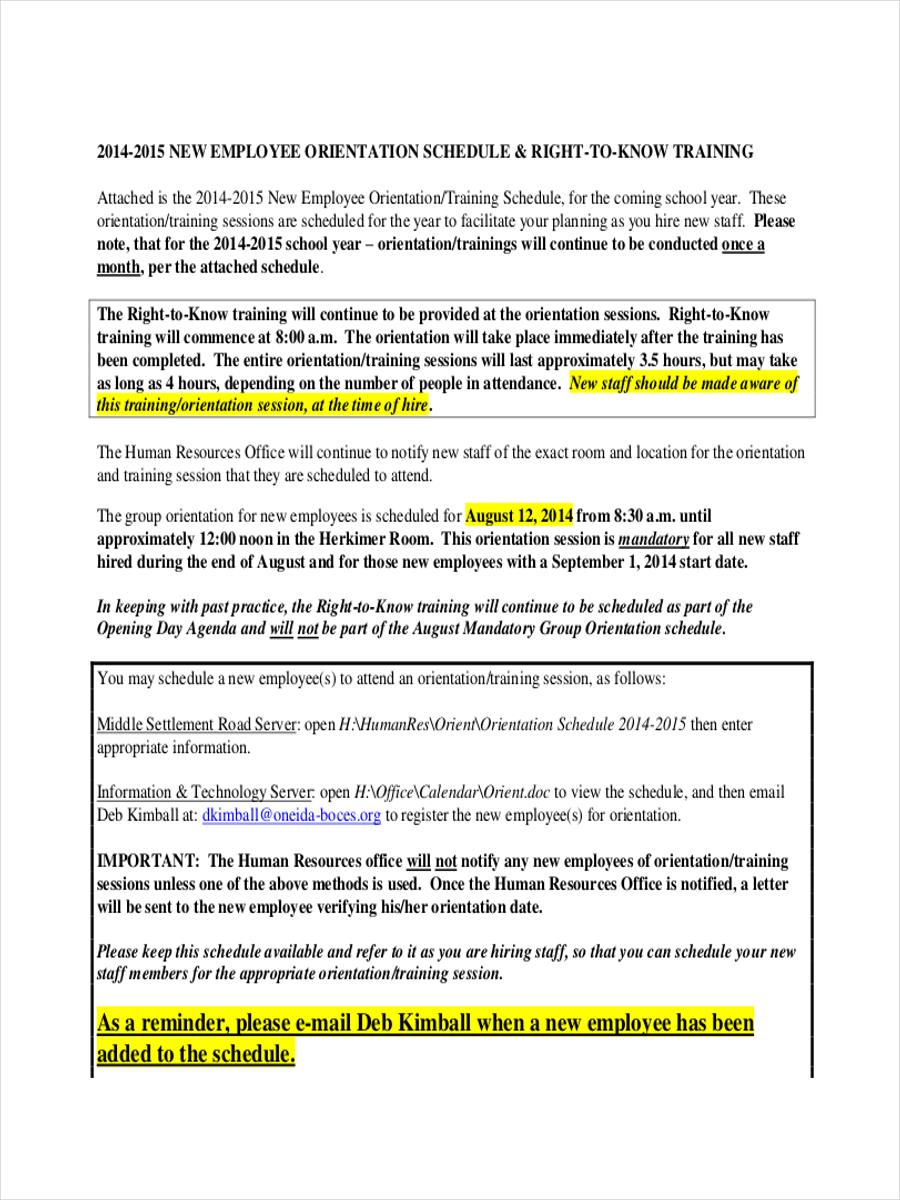27+ Training Schedule Examples to Download
As many entrepreneurs would claim that the employees is the asset of a business, it is inevitable to see them come and go. For most organizations, recruitment is a serious matter. This is how a company measures their success towards the future. In a fulfillment of a productive and high-ranking performance, it is best when the new employees are skilled and well-trained. Because of this, a training plan must push through no matter what. Therefore, you will need a training schedule to make sure that all the plans will go accordingly. With this, you can start by exploring the sample training schedules below for your reference.
What is a Training Schedule? – Definition
A training schedule is a planned sequence of exercises or activities designed to achieve specific fitness, skill, or knowledge goals within a set timeframe. It outlines the type, duration, frequency, and intensity of workouts or training sessions, tailored to an individual’s or group’s objectives. Training schedules are widely used in sports, personal fitness, education, and professional development to systematically approach improvement and performance enhancement.
Training Schedule Format
Participant Name:
Participant’s Full NameTraining Objective:
Clear and concise description of the goal.Schedule Duration:
Start Date: DD/MM/YYYY
End Date: DD/MM/YYYY
Total Duration: X weeks/months
Weekly Training Plan
Week 1: [Date Range]
Monday:
- Activity: Description of the activity or workout
- Duration: Time spent or reps/sets
- Intensity: Easy/Moderate/Hard
- Notes: Any specific instructions or tips
Tuesday:
- Rest Day/Activity: Description (if any activity is planned)
- Notes: Recovery tips or rest day activities
Wednesday:
- Activity: Description
- Duration: Time/Reps/Sets
- Intensity: Level of intensity
- Notes: Additional info
Thursday:
- Activity: Description
- Duration: Time/Reps/Sets
- Intensity: Intensity level
- Notes: Extra instructions
Friday:
- Activity: Description
- Duration: Time/Reps/Sets
- Intensity: How hard
- Notes: Special instructions
Saturday:
- Activity: Workout or activity description
- Duration: Duration or quantity
- Intensity: Intensity level
- Notes: Further information
Sunday:
- Rest Day/Activity: Optional activity
- Notes: Tips for recovery or leisure activities
(Repeat the weekly format for each week of the training schedule, adjusting the activities, durations, and intensity as necessary.)
Progress Tracking and Notes
- Tracking Method: How participants will monitor their progress (e.g., tracking app, journal).
- Weekly Goals: Short-term goals to aim for each week.
- Adjustments: Notes on when to increase intensity or change activities.
- Motivational Tips: Encouragement or advice to keep participants motivated.
Conclusion
Wrap up your training schedule with any final thoughts, encouragement, or advice for participants to get the most out of the program. Emphasize the importance of consistency, rest, and proper nutrition.
Training Schedule Chart
Participant Name: ______________________
Goal/Objective: ______________________
Duration: From _______ To _______
| Day | Activity | Duration | Intensity | Notes |
|---|---|---|---|---|
| Monday | ||||
| Tuesday | ||||
| Wednesday | ||||
| Thursday | ||||
| Friday | ||||
| Saturday | Optional/Recovery Day | |||
| Sunday | Rest Day |
Weekly Goals:
- Goal 1
- Goal 2
- Goal 3
Types of Training Schedule
- Induction or Orientation Training Schedule
- On-the-Job Training Schedule
- Off-the-Job Training Schedule
- Skills Development Training Schedule
- Leadership and Management Training Schedule
- Compliance and Regulatory Training Schedule
- Safety and Emergency Procedures Training Schedule
- Technical Skills Training Schedule
- Soft Skills Training Schedule
- Cross-Functional Training Schedule
- Performance Improvement Training Schedule
- Succession Planning Training Schedule
- Team Building and Collaboration Training Schedule
- Diversity and Inclusion Training Schedule
- Product and Service Training Schedule
Tips for an Effective Training Schedule
- Define Clear Objectives: Start by identifying specific goals for the training program. Knowing what you aim to achieve helps tailor the schedule to meet these objectives effectively.
- Understand Your Audience: Tailor the training schedule to the needs, skill levels, and learning styles of the participants. This ensures the material is relevant and engaging for everyone involved.
- Incorporate Varied Training Methods: Use a mix of training techniques such as workshops, seminars, e-learning, and hands-on activities. This variety caters to different learning preferences and keeps the training dynamic.
- Schedule Regular Breaks: Breaks are crucial for maintaining concentration and enhancing information retention. Ensure your schedule includes short breaks throughout the day and longer breaks between intensive sessions.
- Allocate Time for Practice: Learning is more effective when participants can practice what they’ve learned. Include ample time in your schedule for practical exercises, role-playing, or real-world application of skills.
- Ensure Flexibility: Be prepared to adjust the schedule as needed based on feedback, the pace at which participants are learning, and unforeseen circumstances. Flexibility helps maintain the effectiveness of the training program.
- Incorporate Feedback Sessions: Feedback is invaluable for both trainers and participants. Schedule time for feedback to understand what is working well and what could be improved.
- Use Experienced Trainers: Ensure that the individuals leading the training are knowledgeable, engaging, and skilled at teaching. The quality of the trainer significantly impacts the effectiveness of the training.
- Prioritize Essential Content: Focus on the most critical information and skills that participants need. Avoid overloading the schedule with too much content, which can lead to information overwhelm.
- Promote Interaction and Engagement: Encourage participation through discussions, group activities, and interactive sessions. Engagement enhances learning and makes the training more enjoyable.
- Provide Resources for Continued Learning: Offer additional materials and resources for participants to explore after the training. Continuous learning helps reinforce the training content and encourages further development.
- Evaluate and Revise: After the training, evaluate its success against your objectives. Use participant feedback, assessments, and your observations to make necessary adjustments for future sessions.
Benefits of Using Training Schedules
- Structured Learning: Training schedules provide a structured framework for learning, ensuring that all necessary topics are covered systematically and in an organized manner.
- Clear Objectives: They help in setting and communicating clear learning objectives, ensuring that both trainers and participants understand the goals of the training.
- Time Management: By allocating specific times for different activities, training schedules facilitate better time management, making the training process more efficient.
- Improved Focus and Retention: A well-planned schedule allows for regular breaks and varied activities, which can help improve participants’ focus and information retention.
- Resource Optimization: Training schedules enable the effective use of resources, including trainers, materials, and facilities, by planning their use in advance.
- Enhanced Motivation: Knowing what to expect and having a clear pathway can enhance participants’ motivation and engagement with the training program.
- Flexibility and Adaptability: Although structured, training schedules can be designed to include flexibility, allowing adjustments based on participant feedback or unforeseen challenges.
- Performance Tracking: Scheduled assessments and feedback sessions make it easier to track participants’ progress and the effectiveness of the training.
- Consistency: For organizations, training schedules ensure that all participants receive the same information and training experience, leading to consistency in skills and knowledge across the board.
- Goal Alignment: Training schedules can be aligned with organizational goals, ensuring that the training contributes directly to achieving broader objectives.
- Professional Development: They support professional development by systematically addressing the skills and knowledge gaps, thereby preparing participants for future roles and responsibilities.
- Increased ROI: By ensuring that training is delivered efficiently and effectively, training schedules can help organizations maximize the return on investment in their training programs.
27+ Training Schedule Examples
1. Training Schedule Template
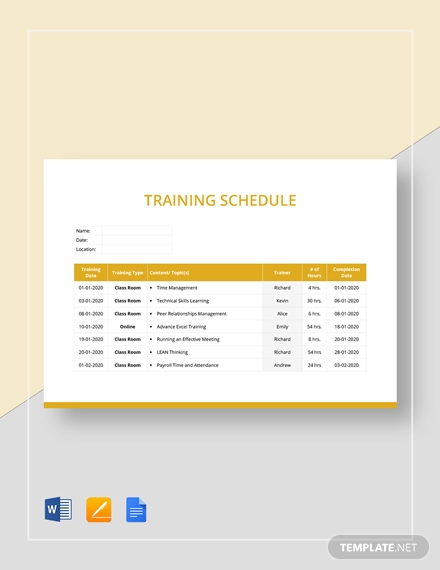
2. Work Training Schedule Template
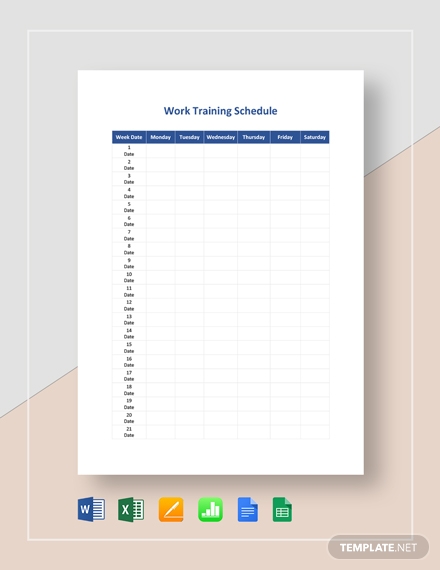
3. Monthly Training Schedule Template
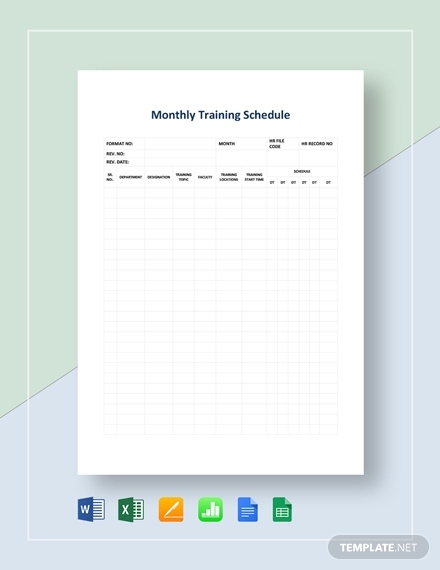
4. Employee Training Schedule
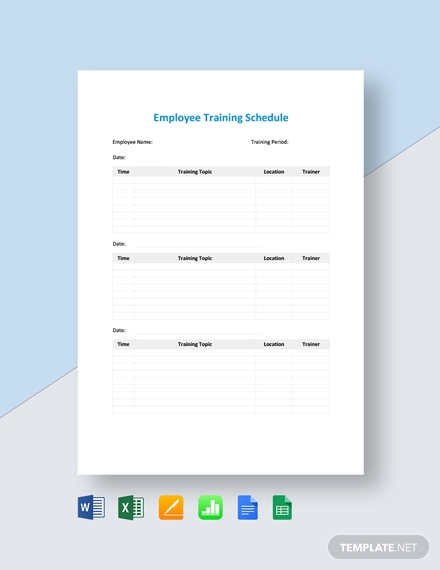
5. Training Program Schedule Template
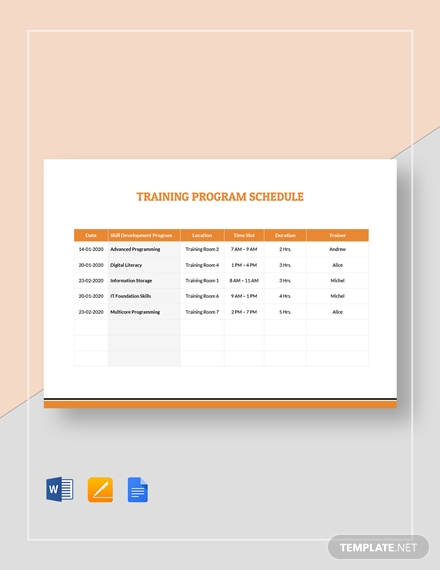
6. Restaurant Employee Training Schedule
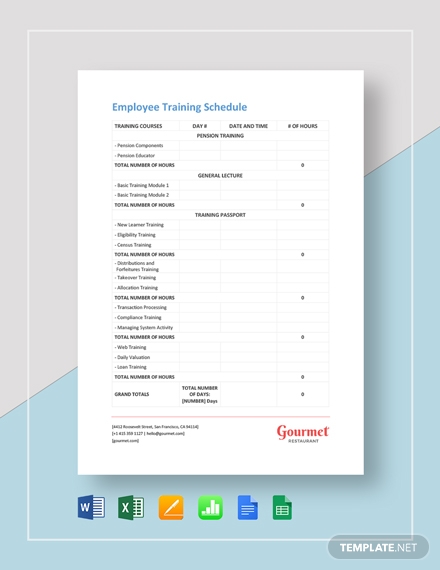
7. Hourly Training Schedule Template
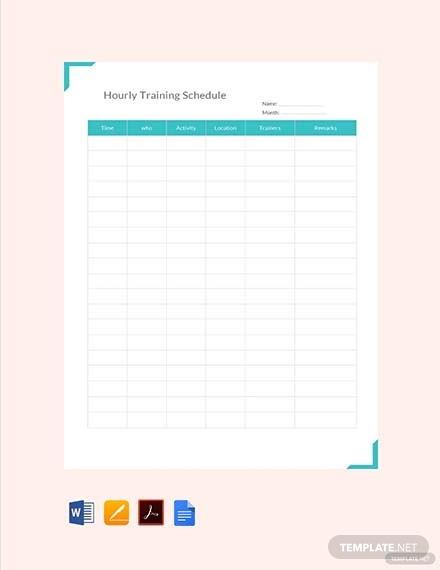
8. Free Safety Training Schedule
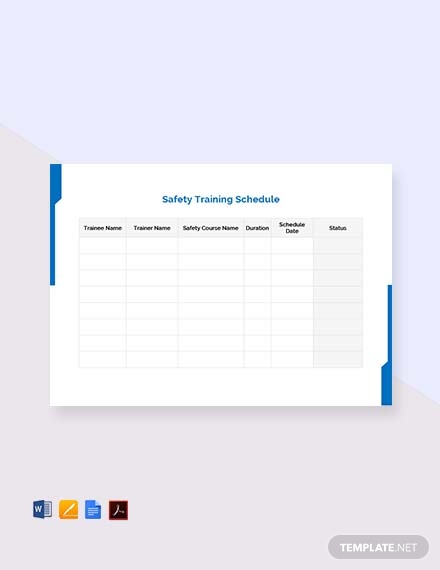
9. Free Work Training Schedule

10. Free Monthly Training Schedule
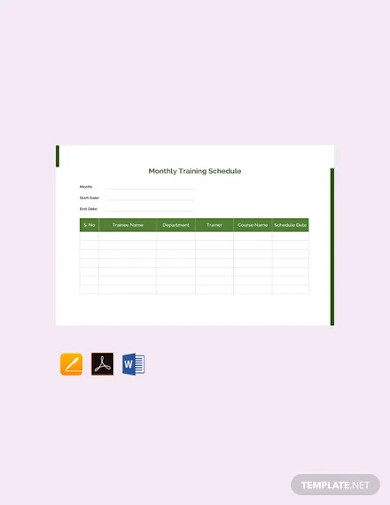
11. Training Schedule Gantt Chart Template
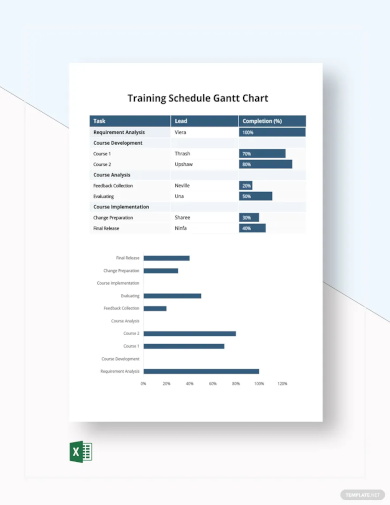
12. Weekly Training Schedule Template
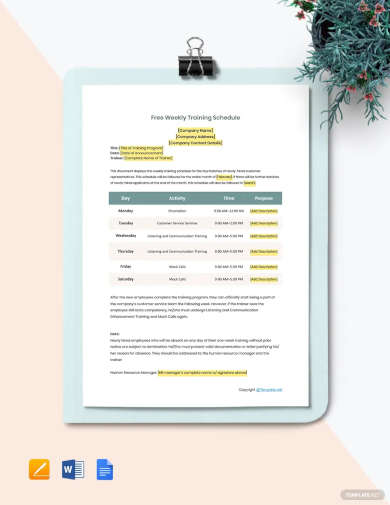
13. Workout Training Schedule Template
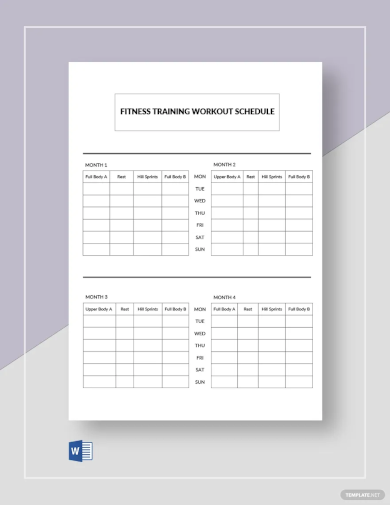
14. Strength Training Workout Schedule Template
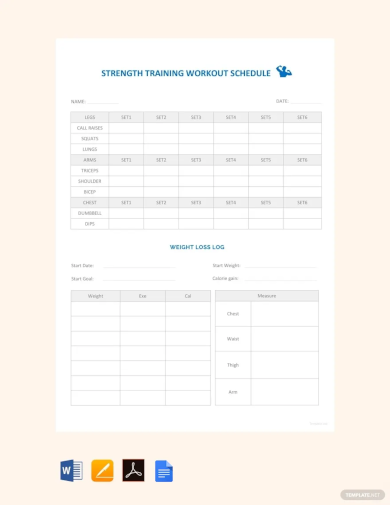
15. Fitness Training Workout Schedule Template
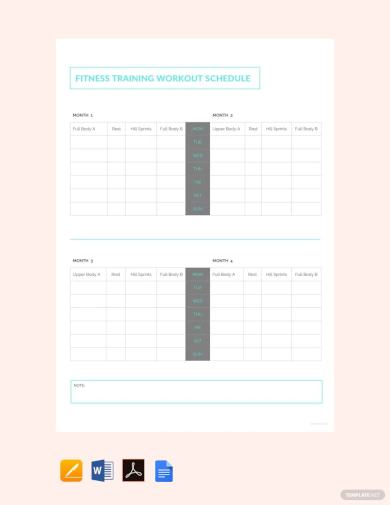
16. Weekly Weight Training Workout Schedule Template
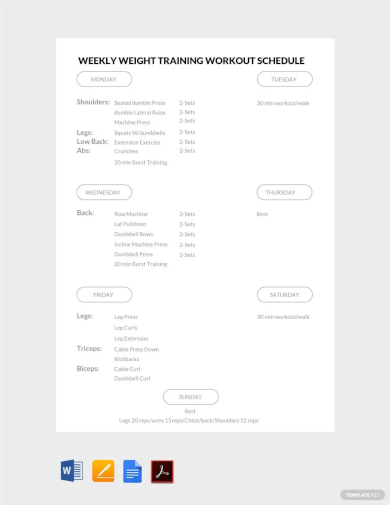
17. Training and Development Schedule template
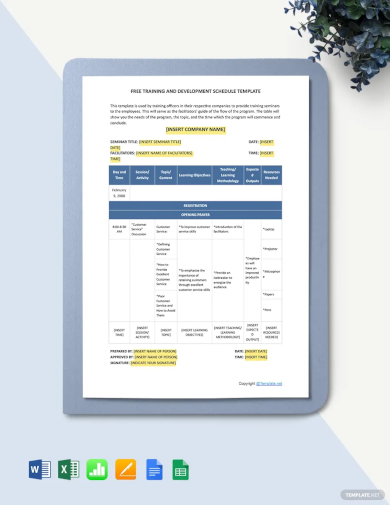
18. Volunteer Training Schedule
19. Schedule for Technical Training
20. Training Session Schedule Example
21. Blank Training Schedule
22. Training Course Schedule Sample
23. Schedule for Training Process
24. Employee Training Schedule Example
25. Schedule for Safety Training
26. Computer Training Schedule Sample
27. Orientation Training Schedule
28. Schedule for Army Training
Company Training Schedule: XYZ Corp Onboarding and Skill Development Program
Overview
Participant Group: New Employees
Objective: To onboard new employees with company culture, policies, and essential skill sets required for their roles.
Duration: 4 Weeks
Start Date: April 1, 2024
End Date: April 28, 2024
Week 1: Company Onboarding and Culture
| Day | Topic | Duration | Format | Trainer |
|---|---|---|---|---|
| Monday | Welcome & Company History | 2 hrs | Presentation | Jane Doe (HR) |
| Tuesday | Company Policies & Ethics | 3 hrs | Workshop | John Smith (HR) |
| Wednesday | Health & Safety Protocols | 2 hrs | Video & Quiz | Safety Team |
| Thursday | Introduction to Teams & Departments | 4 hrs | Meet & Greet | Department Heads |
| Friday | Company Culture & Values | 2 hrs | Interactive | CEO & Founders |
Weekly Goals:
- Understand the history and values of XYZ Corp.
- Familiarize with company policies, health, and safety protocols.
Week 2: Role-Specific Training
| Day | Topic | Duration | Format | Trainer |
|---|---|---|---|---|
| Monday | Product Knowledge and Services | 4 hrs | Presentation | Product Team |
| Tuesday | Basic Sales Techniques | 3 hrs | Workshop | Sales Lead |
| Wednesday | Customer Service Essentials | 3 hrs | Role-play | Service Manager |
| Thursday | Effective Communication Skills | 3 hrs | Seminar | Communication Coach |
| Friday | Time Management & Productivity | 2 hrs | Workshop | HR Specialist |
Weekly Goals:
- Gain in-depth knowledge of products and services.
- Develop foundational skills relevant to the role.
Week 3: Advanced Skills Development
| Day | Topic | Duration | Format | Trainer |
|---|---|---|---|---|
| Monday | Advanced Sales Strategies | 4 hrs | Simulation | Sales Lead |
| Tuesday | Project Management Principles | 3 hrs | Workshop | PMO Lead |
| Wednesday | Software Tools & Applications | 4 hrs | Hands-On | IT Specialist |
| Thursday | Creative Problem Solving | 3 hrs | Interactive | Innovation Team |
| Friday | Leadership & Team Dynamics | 2 hrs | Seminar | HR Specialist |
Weekly Goals:
- Master advanced techniques and tools relevant to specific roles.
- Enhance problem-solving and leadership skills.
Week 4: Integration and Evaluation
| Day | Topic | Duration | Format | Trainer |
|---|---|---|---|---|
| Monday | Project Collaboration | Whole Day | Group Project | Assigned Mentors |
| Tuesday | Feedback & Personal Development | 2 hrs | One-on-One | HR Specialist |
| Wednesday | Final Assessment & Certification | 3 hrs | Test | Department Heads |
| Thursday | Company Systems & Security | 2 hrs | Online Course | IT Security Team |
| Friday | Graduation & Welcome Ceremony | 3 hrs | Ceremony | CEO & Founders |
Weekly Goals:
- Apply learned skills in a collaborative project.
- Successfully complete the onboarding process and assessments.
Importance of Employee Training
Training is always part of every employee’s development. Even when you are hired in an instant, that doesn’t always mean you surpass the company’s expectations. All new staff must undergo training programs that will help in developing skills. According to the analysis report published by the Managementhelp.org, the benefits of employee training includes enhancing employee motivation, job satisfaction, and efficiency at work. Because of this, your company will expand and develop a higher-ranking performance.
How To Write a Training Schedule
Since you are now aware of the importance of a training schedule for your business or personal appointments, writing now requires paying attention to details. You have to make sure that all your plans will finish on time. Therefore, you need to finish it and use it for your needs. To do so, you can follow the list of steps below.
1. Define SMART Goals and Objectives
When preparing your training timetable, you need to start by highlighting your objective. These will become the focus of the whole training program, and the basis of your desired learning outcomes. Go through your purpose and define it. Is it for a seminar schedule? Is there an upcoming basketball tournament? You have to weigh in so that you will understand the SMART goals that you should establish for your team. With this, you’ll stay focus and on track.
2. Make a List of the Sessions or Activities
Now, begin by organizing the list of activities involved. A training program is typically divided into different training sessions. For gym beginners, you can start the workout schedule with a warm-up exercise. Then, follow it with the basic teaching of workout activities. Make sure to fill out the 30-day workout plan. With this, you will ensure that your clients will maintain their progress and accomplish their goals.
3. Carefully Allocate the Time for Each Session
Next, set a time schedule to keep you on track. You have to divide the time equally for each session. This includes time allocation for breaks, such as lunch breaks. Then, set the training dates according to the availability of trainers and instructors. Will the gym open on weekends? Even the shortest period affects solely to your training plans. Therefore, you have to keep an eye on the time intervals and possible absences.
4. Go over Your Schedule a Few Times
Lastly, you have to get rid of possible errors. Review and recheck your document. It is essential to update it regularly to make sure everything will work accordingly. If problems occur, redo it right away.
FAQs
How Do I Make a Training Schedule?
To make a training schedule, start by defining clear objectives and identifying the skills or knowledge to be developed. Next, determine the duration and frequency of the training sessions. Break down the content into manageable modules, allocate instructors for each topic, and ensure to include breaks and assessments. Tailor the schedule to the audience’s needs for maximum engagement and effectiveness.
How Do I Create a Training Calendar?
Creating a training calendar involves plotting out training sessions over a specific period, such as a month, quarter, or year. Start by listing all planned training topics, then assign dates and times for each session based on the availability of participants and trainers. Consider holidays and other commitments to avoid scheduling conflicts. Use digital calendars for easy adjustments and sharing.
What is Training Schedule Form?
A training schedule form is a document or template used to plan, organize, and communicate the details of training sessions. It typically includes information such as the date, time, topic, trainer, and location of each session, along with objectives and any required materials. This form serves as a guide for both trainers and participants, ensuring structured and effective training.
Why Do We Need a Training Schedule?
A training schedule is essential for organizing and structuring learning activities efficiently. It ensures that all necessary topics are covered within a specified timeframe, facilitates resource planning, and helps participants manage their time. Moreover, a well-planned schedule enhances learning outcomes by providing a clear roadmap, maintaining engagement, and allowing for progress tracking and adjustments.
How do you define a scheduled time
Scheduled time is a planned time. It is an organization of a fixed schedule for activities and events.
How does a timetable differ from a schedule?
A schedule is making the time. It outlines the activities at a specific time, whereas a time table is a particular arrangement of time for events.
How do you define a weekly schedule?
A weekly schedule is planned activities for the week. It serves as a material to keep track of your progress weekly.
Training is a process that a company should never overlook. Whether for business or personal use, training must be complete and useful. With this, you can follow the steps above. Create your training schedule and see where it will bring you. To make sure that your business plans will go accordingly, keep a document that you can rely on. Therefore, set training dates for your employee to consider in developing their skills.


